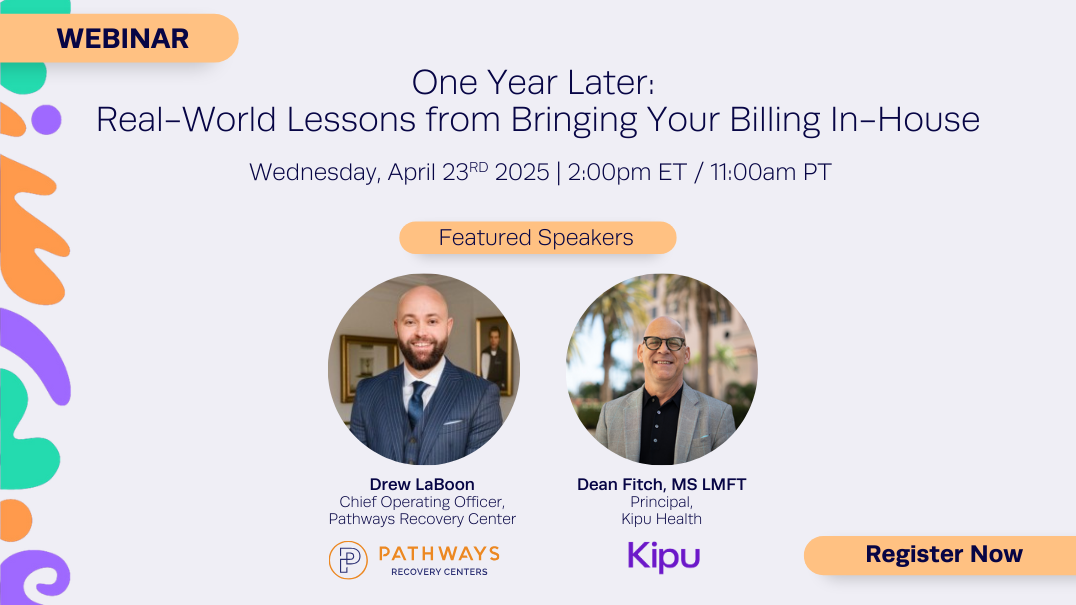Revisiting the Medication Assisted Treatment (MAT) Debate

Seven years ago, we looked at the state of Medication Assisted Treatment (MAT) in Behavioral Health (BH). Since then, there have been many changes, which has prompted us to take a new look into the current landscape of MAT, including its efficacy, the stigma surrounding it, and the latest data on its effectiveness.
Historically, there has been a general reluctance in the addiction treatment community to embrace MAT. This hesitation stems from past experiences where MAT has proved to be of questionable reliability as many substance abusers used it as a quick fix, often failing to combine it with necessary behavioral modifications. Consequently, many of the substance abusers were simply just substituting one drug for another, rather than addressing the root causes of their addiction. I’ll add that over the years in my travels, meetings and conferences I have attended, that most treatment personnel I’ve met stand firmly against MAT. However, given the evolving nature of addiction treatment and new research findings, it is worth it to re-examine these perspectives and take another look at MAT.
However, The US Surgeon General Report “Facing Addiction in America” (the “Report”), which was released in late 2016, delved into this controversial area with an extensive analysis of several MAT which it describes as having clearly demonstrated proven effectiveness. Even in 2024, MAT is still a topic worthy of an objective, open-minded review.
Over the recent years, the debate surrounding medication assisted treatment for opioid addiction has seen significant shifts. While there was once a general reluctance in the addiction treatment community towards MAT, perceptions have been changing, particularly in the context of the opioid epidemic.
A Changing Perspective On MAT
The US Surgeon General Report “Facing Addiction in America” highlighted several MATs as having demonstrated proven effectiveness. In the years since it was published, there has been growing recognition of MAT as the gold standard for treating opioid use disorder. This shift has been driven by increased acknowledgment of MAT effectiveness in reducing withdrawal symptoms, cravings, and the risk of overdose.
MAT: From Controversy To Acceptance
MAT is now widely understood as a combination of FDA-approved medications with counseling and behavioral therapies. This approach addresses both the physical and psychological aspects of addiction. The growing acceptance of MAT reflects a broader shift towards the view on addiction, particularly the opioid crisis, as a public health issue rather than a criminal justice problem.
Federal agencies have made efforts to make MAT more available, with a growing push to integrate these treatments into primary care settings. Programs like the Imani Breakthrough Project have aimed to address racial disparities in treatment access by bringing MAT into culturally familiar settings like churches. However, persistent stigma and barriers do remain, particularly in certain regions and communities where conservative cultural attitudes and policies can limit MAT access.
The Methadone Question Revisited
While Methadone remains a controversial MAT option due to concerns about substituting one addiction for another, its long-term effectiveness cannot be ignored. The emphasis now has shifted toward proper administration and monitoring to prevent misuse and diversion.
Methadone Is A Synthetic Opioid Agonist
For those of you not familiar with that term, an agonist is a chemical substance that binds to and activates certain cell receptors causing a biological response which reduces cravings. (The other type of MAT related activator is an antagonist. An antagonist stops opioids from binding to the brain’s receptors so that a patient on an antagonist just won’t get high if they take opioids. For the sake of simplicity, think of an agonist as a substitute and an antagonist as a blocker.) Methadone is the longest running MAT, having been in use for over 40 years. It has a proven track record but also many critics, because it stands out as the classic example of substituting one addiction for another.
There are also concerns regarding prescribed Methadone users transferring their drugs to third parties for illicit use (called Diversion) and when Methadone doses exceed recommended range, which can lead to overdose and death. Methadone programs are now called Opiate Treatment Programs and must be certified by the Substance Abuse and Mental Health Services Administration and registered with the US Drug Enforcement Administration (DEA). They’re mostly outpatient programs in which patients must initially take their doses under observation. These programs also have the added benefit of limiting other diseases such as HIV and Hepatitis C, since they help eliminate needle sharing which is so common in the heroin addiction community.
Buprenorphine And Naltrexone: Evolving MAT Treatments
Buprenorphine and Naltrexone continue to play important roles in MAT. Recent research has focused on optimizing their use and understanding the long-term impacts. While patients on these medications show improvements compared to those not receiving treatment, studies have highlighted the need for continued refinement of MAT protocols.
Medicated Assisted Treatment For Alcohol
FDA-approved medications (Disulfiram, Naltrexone, and Acamprosate) continue to play a crucial role in treating alcohol use disorder. Recent years have seen increased efforts to combine these pharmacological approaches with behavioral interventions for a more comprehensive treatment. None carries risk of misuse or addiction and all are therefore not DEA scheduled substances.
One additional point I found interesting was that “The Report” failed to take note of commonly used MATs I’ve come across in my research, such as Vivitrol and Suboxone for opioid abuse, and Antibuse disulfiram for alcohol abuse. I’m not sure why that’s the case. Perhaps the Surgeon General elected not to include the names of specific commercial products. Regardless, “The Report” certainly covered a lot of new ground and can’t be expected to have included everything.
- Disulfiram interferes with the body’s metabolism of alcohol, which leads to sickness when it is consumed. The intensity of the reaction depends on both the dose of the Disulfiram and the amount of alcohol ingested. The major impediment for this solution is adherence, because Disulfiram basically punishes consumption. One or two negative episodes tends to take the alcoholic firmly in one direction or another, in his recovery. It depends on how desperate he is for a solution. For that reason, Disulfiram is most effective when its use is supervised or observed to increase compliance.
- Naltrexone counteracts some of the “pleasurable” aspects of drinking in a similar fashion that it does with opioids. In fact, Naltrexone is even showing up in other sorts of addiction treatment, like obesity. It is one of the principal components of Contrave which recently began an advertising campaign for use by obesity patients trying to lose weight. Cross addiction is universally recognized as a potential issue for substance abusers in recovery. To that end, perhaps Naltrexone could actually serve a multi-purpose function by addressing the root cause of addiction; that it’s a brain disorder.
- Acamprosate normalizes alcohol related neurochemical changes in the brain, reducing the symptoms of cravings that can prompt a relapse. There are two main causes for relapse, the actual physical craving and the psychological euphoric recall of a pleasurable event. This is a demonstration of how a MAT combined with traditional therapy can concentrate synergistically to aid in treatment.
Research And Emerging Treatments: Ibogaine And Kratom
While Ibogaine and Kratom remain controversial and unapproved in the United States, the research into new MAT options continues. The potential for opioid vaccines, as reported by the Scripps Research Institute, represents the kind of innovative forward thinking needed to combat addiction’s rapid growth in today’s society.
Ibogaine was originally utilized as an anti-depression cure from 1939-1970. Around the same time it was being phased out, a 19 year old heroin patient noticed it eliminated his cravings to use. It is derived from a rainforest shrub commonly known as Tabernanthe Iboga. News spread and heroin clinics opened around the world. Initial results were very positive with clinicians claiming it acted like an addiction reset button, but some severe side effects led to unacceptably high mortality rates during treatment.
Research has continued outside the US for decades and the drugs success at lower doses (some clinics claim success rates of up to 70%) is once again opening the debate.
Kratom, derived from a plant in the coffee family, commonly found in Indonesia, Malaysia and Thailand, is another controversial MAT that has also gained considerable attention as of late. Many former opioid addicts swear by it, claiming that it has saved their lives. The United States Drug Enforcement Agency recently considered classifying it as a Schedule I drug and even began doing so on an emergency basis, but in an unprecedented move, they held back as a result of tremendous political backlash.
While more professional research is required in these two, and many other areas, perhaps we’ll see approval of some new and innovative MAT in the near future.
Promising Research Continues
Since 2016, research in the fight against opioids has progressed. A promising vaccine against opioids was reported in a December 2016 issue of The Economist. Also, in 2019, The Scripps Research Institute in La Jolla, California, claimed to have developed just such a vaccine. They created a process through which opioids are made to attract the attention of the human immune system (which is normally not the case), by having them attach to a ‘carrier’ protein. That lures the immune system into creating anti-opioid antibodies. Experiments to date have been successful in mice, remaining effective for 2-4 months.
While there are still many hurdles to overcome for human use, it demonstrates some of the ‘outside-the-box’ thinking that can be useful to combat addiction’s rapid growth. While “The Report” seems to strongly endorse the use of MAT, absolute acceptance is hardly universal. For example, on the heels of the Report, the Agency for Healthcare Research and Quality produced its own report listing dozens of MAT related questions it says require further research. Moreover, addiction is certainly much more encompassing than simply alcohol and opiates.
MAT Community Education And Healthcare Provider Training
In recent years there has been increased focus on community education and outreach about MAT. This includes social marketing campaigns, increased social contact with people in recovery, and community events where individuals share their MAT success stories. Additionally, there has been an emphasis on training healthcare providers, including first responders, about MAT and addressing provider-based stigma towards opioid users.
The Road Ahead For MAT
While perceptions about Medication Assisted Treatment (MAT) have improved greatly over the years, challenges still persist. The expansion of harm reduction efforts, such as widespread distribution of Naloxone, has helped shift perceptions about addiction treatment and recovery. However, the stigma remains a significant barrier, particularly in certain regions and communities.
As we move forward, it’s clear that MAT will continue to play its part in addressing substance use disorders. The focus now should be on refining these treatments, improving access, and continuing to educate both healthcare providers and the public about their effectiveness and how they interact with additional therapeutic treatments. While questions remain, the growing body of evidence supporting MAT suggests that it will remain a key component of comprehensive addiction treatment strategies.
Recent Posts
Rely on Kipu to keep you ahead of change.
Subscribe to Kipu for behavioral health news, updates, community celebration, and product announcements.



